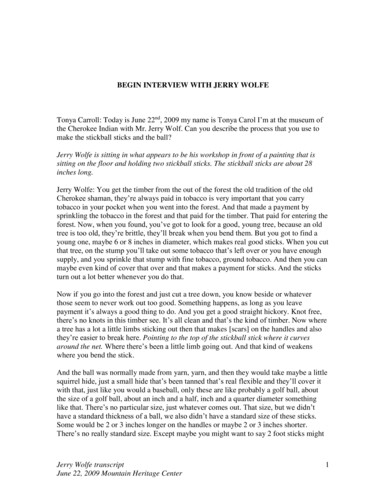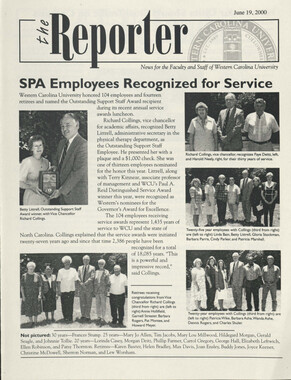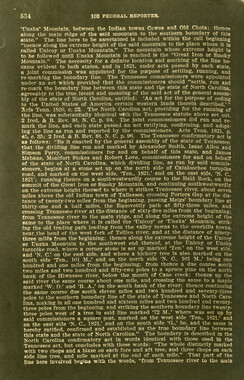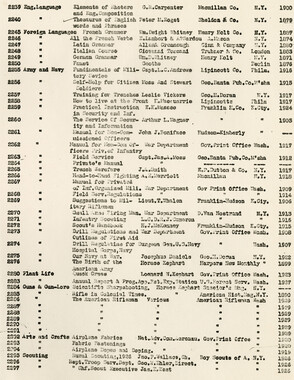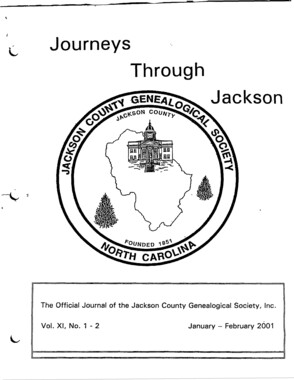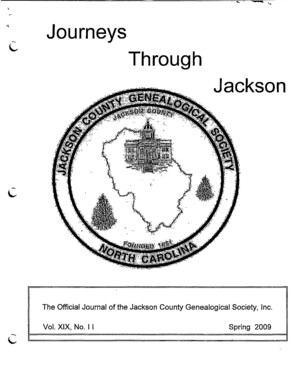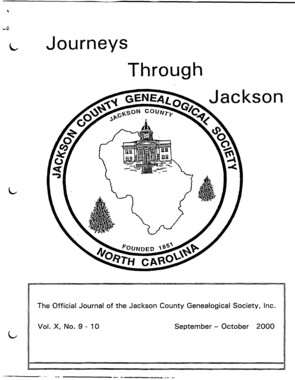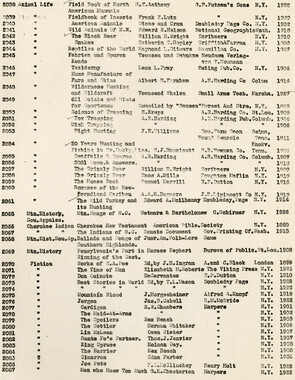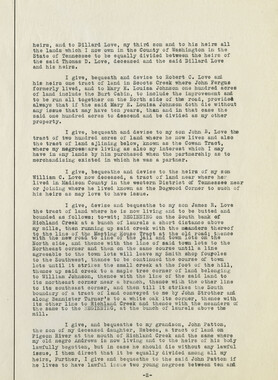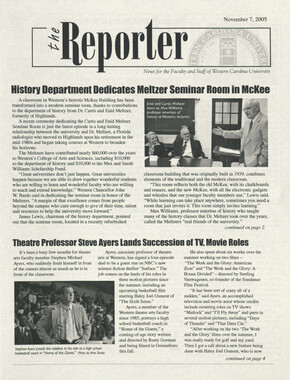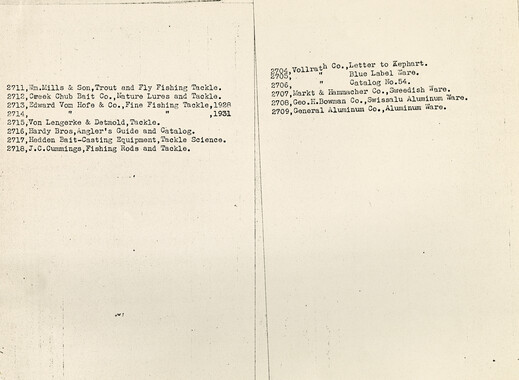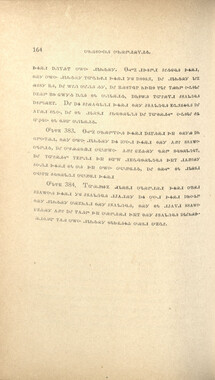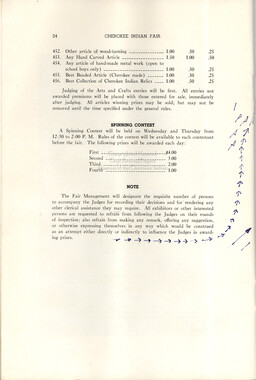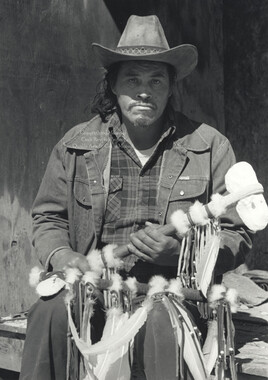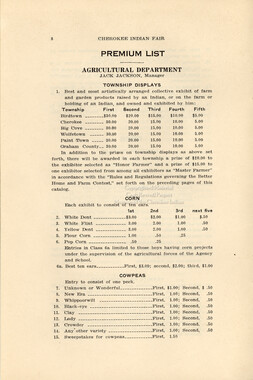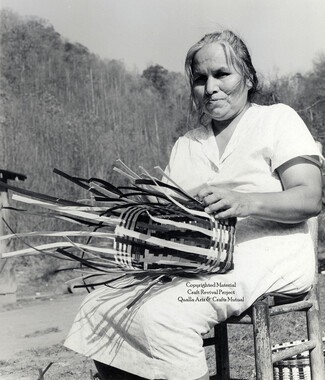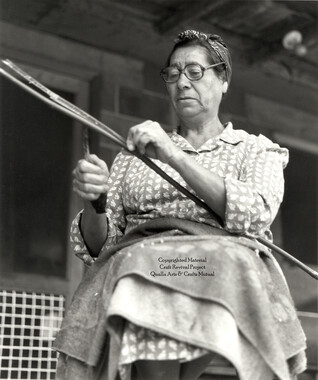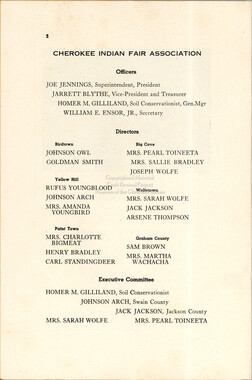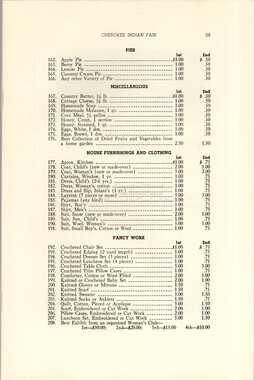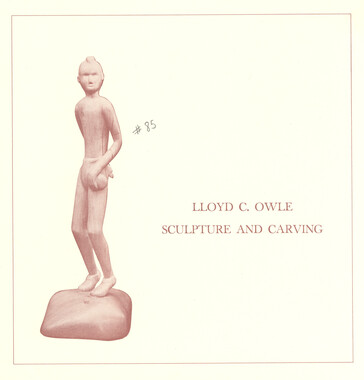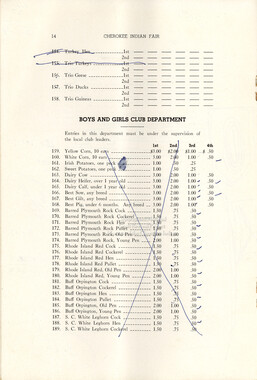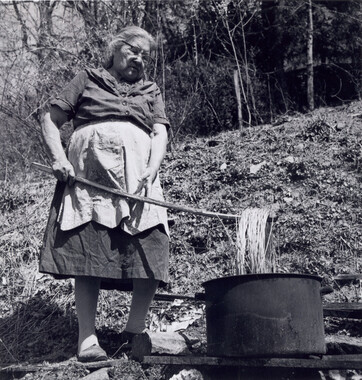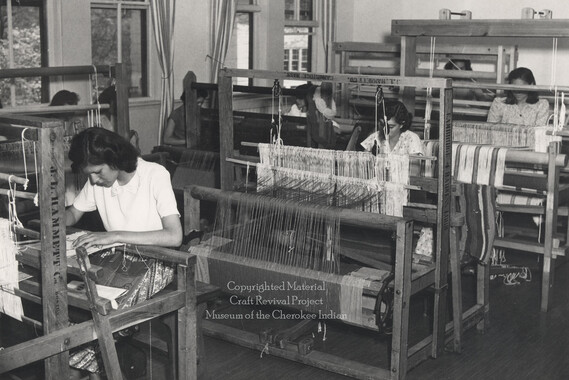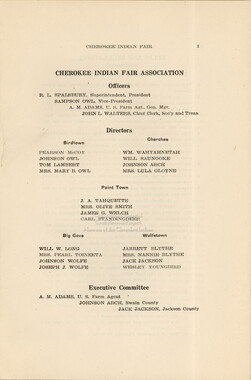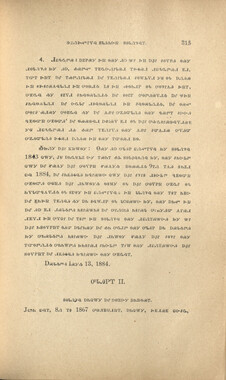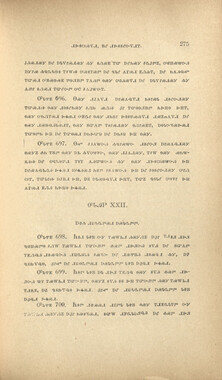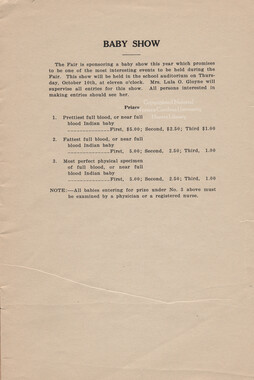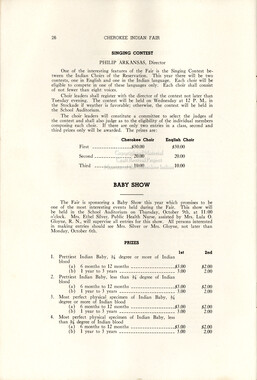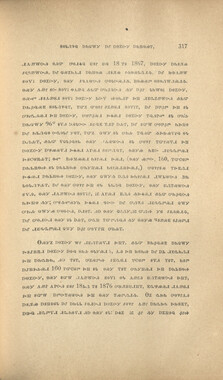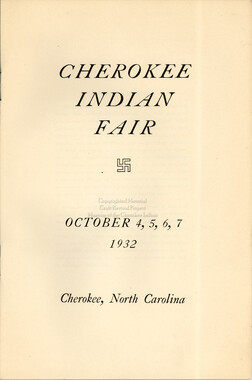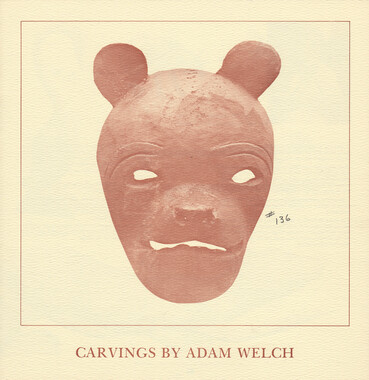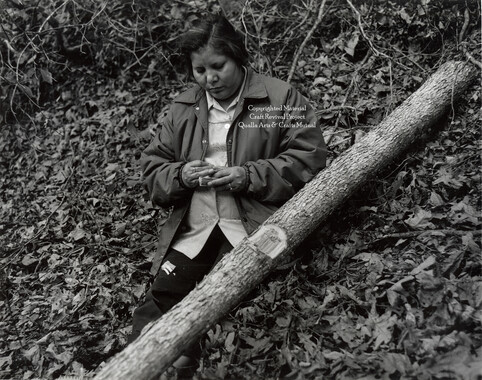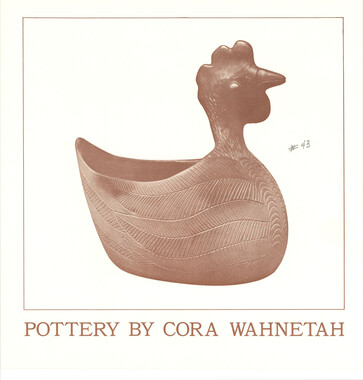Western Carolina University (11)
View all
- Cherokee Traditions (3)
- Craft Revival (10)
- Great Smoky Mountains - A Park for America (31)
- Highlights from Western Carolina University (8)
- Journeys Through Jackson (48)
- LGBTQIA+ Archive of Jackson County (4)
- Oral Histories of Western North Carolina (20)
- Picturing Appalachia (4)
- Western Carolina University Herbarium (38)
- Western Carolina University: Making Memories (10)
- Western Carolina University Publications (195)
- Canton Champion Fibre Company (0)
- Civil War in Southern Appalachia (0)
- Horace Kephart (0)
- Stories of Mountain Folk (0)
- Travel Western North Carolina (0)
- Western Carolina University Fine Art Museum Vitreograph Collection (0)
- Western Carolina University Restricted Electronic Theses and Dissertations (0)
- Western North Carolina Regional Maps (0)
- World War II in Southern Appalachia (0)
University of North Carolina Asheville (0)
View all
- Faces of Asheville (0)
- Forestry in Western North Carolina (0)
- Grove Park Inn Photograph Collection (0)
- Isaiah Rice Photograph Collection (0)
- Morse Family Chimney Rock Park Collection (0)
- Picturing Asheville and Western North Carolina (0)
- North Carolina Park Commission (30)
- Western Carolina University (195)
- Western Carolina University. Mountain Heritage Center (6)
- Wilburn, Hiram Coleman, 1880-1967 (17)
- Allanstand Cottage Industries (0)
- Appalachian National Park Association (0)
- Bennett, Kelly, 1890-1974 (0)
- Berry, Walter (0)
- Brasstown Carvers (0)
- Cain, Doreyl Ammons (0)
- Carver, George Washington, 1864?-1943 (0)
- Cathey, Joseph, 1803-1874 (0)
- Champion Fibre Company (0)
- Champion Paper and Fibre Company (0)
- Cherokee Indian Fair Association (0)
- Cherokee Language Program (0)
- Crittenden, Lorraine (0)
- Crowe, Amanda (0)
- Edmonston, Thomas Benton, 1842-1907 (0)
- Ensley, A. L. (Abraham Lincoln), 1865-1948 (0)
- Fromer, Irving Rhodes, 1913-1994 (0)
- George Butz (BFS 1907) (0)
- Goodrich, Frances Louisa (0)
- Grant, George Alexander, 1891-1964 (0)
- Heard, Marian Gladys (0)
- Kephart, Calvin, 1883-1969 (0)
- Kephart, Horace, 1862-1931 (0)
- Kephart, Laura, 1862-1954 (0)
- Laney, Gideon Thomas, 1889-1976 (0)
- Masa, George, 1881-1933 (0)
- McElhinney, William Julian, 1896-1953 (0)
- Niggli, Josephina, 1910-1983 (0)
- Osborne, Kezia Stradley (0)
- Owens, Samuel Robert, 1918-1995 (0)
- Penland Weavers and Potters (0)
- Rhodes, Judy (0)
- Roberts, Vivienne (0)
- Roth, Albert, 1890-1974 (0)
- Schenck, Carl Alwin, 1868-1955 (0)
- Sherrill's Photography Studio (0)
- Smith, Edward Clark (0)
- Southern Highland Handicraft Guild (0)
- Southern Highlanders, Inc. (0)
- Stalcup, Jesse Bryson (0)
- Stearns, I. K. (0)
- Thompson, James Edward, 1880-1976 (0)
- United States. Indian Arts and Crafts Board (0)
- USFS (0)
- Vance, Zebulon Baird, 1830-1894 (0)
- Weaver, Zebulon, 1872-1948 (0)
- Western Carolina College (0)
- Western Carolina Teachers College (0)
- Whitman, Walt, 1819-1892 (0)
- Williams, Isadora (0)
- Appalachian Region, Southern (11)
- Asheville (N.C.) (1)
- Buncombe County (N.C.) (4)
- Graham County (N.C.) (1)
- Haywood County (N.C.) (33)
- Jackson County (N.C.) (288)
- Macon County (N.C.) (12)
- Qualla Boundary (9)
- Swain County (N.C.) (1)
- Yancey County (N.C.) (1)
- Avery County (N.C.) (0)
- Blount County (Tenn.) (0)
- Cherokee County (N.C.) (0)
- Clay County (N.C.) (0)
- Great Smoky Mountains National Park (N.C. and Tenn.) (0)
- Henderson County (N.C.) (0)
- Knox County (Tenn.) (0)
- Knoxville (Tenn.) (0)
- Lake Santeetlah (N.C.) (0)
- Madison County (N.C.) (0)
- McDowell County (N.C.) (0)
- Mitchell County (N.C.) (0)
- Polk County (N.C.) (0)
- Rutherford County (N.C.) (0)
- Transylvania County (N.C.) (0)
- Watauga County (N.C.) (0)
- Waynesville (N.C.) (0)
- Clippings (information Artifacts) (14)
- Crafts (art Genres) (5)
- Interviews (43)
- Land Surveys (29)
- Letters (correspondence) (3)
- Manuscripts (documents) (16)
- Maps (documents) (9)
- Newsletters (167)
- Periodicals (48)
- Photographs (47)
- Portraits (16)
- Publications (documents) (97)
- Slides (photographs) (3)
- Sound Recordings (35)
- Specimens (38)
- Transcripts (35)
- Video Recordings (physical Artifacts) (10)
- Aerial Photographs (0)
- Aerial Views (0)
- Albums (books) (0)
- Articles (0)
- Artifacts (object Genre) (0)
- Biography (general Genre) (0)
- Cards (information Artifacts) (0)
- Depictions (visual Works) (0)
- Design Drawings (0)
- Drawings (visual Works) (0)
- Envelopes (0)
- Facsimiles (reproductions) (0)
- Fiction (general Genre) (0)
- Financial Records (0)
- Fliers (printed Matter) (0)
- Glass Plate Negatives (0)
- Guidebooks (0)
- Internegatives (0)
- Memorandums (0)
- Minutes (administrative Records) (0)
- Negatives (photographs) (0)
- Newspapers (0)
- Occupation Currency (0)
- Paintings (visual Works) (0)
- Pen And Ink Drawings (0)
- Personal Narratives (0)
- Plans (maps) (0)
- Poetry (0)
- Postcards (0)
- Programs (documents) (0)
- Questionnaires (0)
- Scrapbooks (0)
- Sheet Music (0)
- Speeches (documents) (0)
- Text Messages (0)
- Tintypes (photographs) (0)
- Vitreographs (0)
- Cataloochee History Project (2)
- Qualla Arts and Crafts Mutual Collection (2)
- Sara Madison Collection (7)
- The Reporter, Western Carolina University (119)
- WCU Gender and Sexuality Oral History Project (14)
- WCU Oral History Collection - Mountain People, Mountain Lives (12)
- WCU Students Newspapers Collection (76)
- A.L. Ensley Collection (0)
- Appalachian Industrial School Records (0)
- Appalachian National Park Association Records (0)
- Axley-Meroney Collection (0)
- Bayard Wootten Photograph Collection (0)
- Bethel Rural Community Organization Collection (0)
- Blumer Collection (0)
- C.W. Slagle Collection (0)
- Canton Area Historical Museum (0)
- Carlos C. Campbell Collection (0)
- Cherokee Studies Collection (0)
- Daisy Dame Photograph Album (0)
- Daniel Boone VI Collection (0)
- Doris Ulmann Photograph Collection (0)
- Elizabeth H. Lasley Collection (0)
- Elizabeth Woolworth Szold Fleharty Collection (0)
- Frank Fry Collection (0)
- George Masa Collection (0)
- Gideon Laney Collection (0)
- Hazel Scarborough Collection (0)
- Hiram C. Wilburn Papers (0)
- Historic Photographs Collection (0)
- Horace Kephart Collection (0)
- Humbard Collection (0)
- Hunter and Weaver Families Collection (0)
- I. D. Blumenthal Collection (0)
- Isadora Williams Collection (0)
- Jesse Bryson Stalcup Collection (0)
- Jim Thompson Collection (0)
- John B. Battle Collection (0)
- John C. Campbell Folk School Records (0)
- John Parris Collection (0)
- Judaculla Rock project (0)
- Kelly Bennett Collection (0)
- Love Family Papers (0)
- Major Wiley Parris Civil War Letters (0)
- Map Collection (0)
- McFee-Misemer Civil War Letters (0)
- Mountain Heritage Center Collection (0)
- Norburn - Robertson - Thomson Families Collection (0)
- Pauline Hood Collection (0)
- Pre-Guild Collection (0)
- R.A. Romanes Collection (0)
- Rosser H. Taylor Collection (0)
- Samuel Robert Owens Collection (0)
- Sherrill Studio Photo Collection (0)
- Smoky Mountains Hiking Club Collection (0)
- Stories of Mountain Folk - Radio Programs (0)
- Venoy and Elizabeth Reed Collection (0)
- WCU Mountain Heritage Center Oral Histories (0)
- Western North Carolina Tomorrow Black Oral History Project (0)
- William Williams Stringfield Collection (0)
- Zebulon Weaver Collection (0)
- Artisans (1)
- Cherokee art (1)
- Cherokee artists -- North Carolina (2)
- Cherokee women (1)
- Church buildings (1)
- College student newspapers and periodicals (76)
- Maps (5)
- Paper industry (1)
- School integration -- Southern States (1)
- Wood-carving -- Appalachian Region, Southern (1)
- African Americans (0)
- Appalachian Trail (0)
- Cherokee language (0)
- Cherokee pottery (0)
- Civilian Conservation Corps (U.S.) (0)
- Dams (0)
- Dance (0)
- Education (0)
- Floods (0)
- Folk music (0)
- Forced removal, 1813-1903 (0)
- Forest conservation (0)
- Forests and forestry (0)
- Gender nonconformity (0)
- Great Smoky Mountains National Park (N.C. and Tenn.) (0)
- Hunting (0)
- Landscape photography (0)
- Logging (0)
- Mines and mineral resources (0)
- North Carolina -- Maps (0)
- Postcards (0)
- Pottery (0)
- Railroad trains (0)
- Rural electrification -- North Carolina, Western (0)
- Segregation -- North Carolina, Western (0)
- Slavery (0)
- Sports (0)
- Storytelling (0)
- Waterfalls -- Great Smoky Mountains (N.C. and Tenn.) (0)
- Weaving -- Appalachian Region, Southern (0)
- World War, 1939-1945 (0)
Jerry Wolfe: Cherokee Artist and Ballplayer
Item
Item’s are ‘child’ level descriptions to ‘parent’ objects, (e.g. one page of a whole book).
-
-
Jerry Wolfe transcript June 22, 2009 Mountain Heritage Center 1 BEGIN INTERVIEW WITH JERRY WOLFE Tonya Carroll: Today is June 22nd, 2009 my name is Tonya Carol I’m at the museum of the Cherokee Indian with Mr. Jerry Wolf. Can you describe the process that you use to make the stickball sticks and the ball? Jerry Wolfe is sitting in what appears to be his workshop in front of a painting that is sitting on the floor and holding two stickball sticks. The stickball sticks are about 28 inches long. Jerry Wolfe: You get the timber from the out of the forest the old tradition of the old Cherokee shaman, they’re always paid in tobacco is very important that you carry tobacco in your pocket when you went into the forest. And that made a payment by sprinkling the tobacco in the forest and that paid for the timber. That paid for entering the forest. Now, when you found, you’ve got to look for a good, young tree, because an old tree is too old, they’re brittle, they’ll break when you bend them. But you got to find a young one, maybe 6 or 8 inches in diameter, which makes real good sticks. When you cut that tree, on the stump you’ll take out some tobacco that’s left over or you have enough supply, and you sprinkle that stump with fine tobacco, ground tobacco. And then you can maybe even kind of cover that over and that makes a payment for sticks. And the sticks turn out a lot better whenever you do that. Now if you go into the forest and just cut a tree down, you know beside or whatever those seem to never work out too good. Something happens, as long as you leave payment it’s always a good thing to do. And you get a good straight hickory. Knot free, there’s no knots in this timber see. It’s all clean and that’s the kind of timber. Now where a tree has a lot a little limbs sticking out then that makes [scars] on the handles and also they’re easier to break here. Pointing to the top of the stickball stick where it curves around the net. Where there’s been a little limb going out. And that kind of weakens where you bend the stick. And the ball was normally made from yarn, yarn, and then they would take maybe a little squirrel hide, just a small hide that’s been tanned that’s real flexible and they’ll cover it with that, just like you would a baseball, only these are like probably a golf ball, about the size of a golf ball, about an inch and a half, inch and a quarter diameter something like that. There’s no particular size, just whatever comes out. That size, but we didn’t have a standard thickness of a ball, we also didn’t have a standard size of these sticks. Some would be 2 or 3 inches longer on the handles or maybe 2 or 3 inches shorter. There’s no really standard size. Except maybe you might want to say 2 foot sticks might Jerry Wolfe transcript June 22, 2009 Mountain Heritage Center 2 be workable. But they’re all good, they were used in big games those smaller sticks were too as well as the big sticks. TC: From the beginning to where you go out and you cut down the tree for the sticks to the end can you kind of tell me about how you do that? JW: Yeah, normally, normally I select as I mentioned you know good straight timber and also the payment and there’s two kinds of hickory, I think there’s two kinds of any kind of species of trees that are in the forest like the maple, you have two kinds of maple, two kinds of all kinds of timbers. One is called, they call it a shaggy bark, hickory, and I never did use that too much. But the smooth bark timber is what I use and it makes a good pair, better pair. TC: Are the sticks just one piece? JW: One long stick and then you carve out a center, showing the handle the center of the stick and you cut it down to maybe a ¼ of an inch thick and then you put it around, it’d be long, straight, and I always have a little block set up around half a circle and I’ll take and anchor half of this, holding the very end of the net side of stick. I’ll anchor it down around that circle and then I’ll pull it bend it around and then clamp it down and then squeeze it together and it’ll come out like that, the curved net end of the stick. like this right here. That’s how that comes out. And so that’s how we bend them around and then we’ll measure off for the threading of those, putting in the webbing. We drill the holes just like so far apart they appear to be about an inch apart so they’ll be real uniform. TC: Why what’s webbing made out of? JW: Usually animal sinew, a sinew from an animal. The old timers used a long time ago many years ago when the wire was introduced, when the settlers brought in materials metal materials that have wire in that bunch and a lot of times they use wire. But I always like to go by the old time way, way on back beyond you know to put the webbing in. So it’d be more, we get away from commercial. You see we don’t use commercial in any web materials, just like right there is a wooden nail, a wooden nail, and a wooden nail, see. Points to places where there is a wooden nail all along the handle. So there’s no commercial about these. They’re all materials from the mountains. TC: How long down the whole process take for you to make a pair of sticks? JW: A person could make a pair in a person probably could make 2 or 3 pair a day. But you make one, maybe you’ll just put one pair together and then you let them kind of season and kind of let them dry just a little. And then when you take them out of the form then you can put another pair in maybe a day or two later after these become kind of accustomed to being round and held together. So now we use a lot of time we use glue in there too, along the side of the handle which is commercial but in the old days they had a glue also that come from a vine that grows out in the mountains. And then from the rosin and from the juice of the vine is a… the way that they had them stick together like that. Jerry Wolfe transcript June 22, 2009 Mountain Heritage Center 3 And then they also used commercial nails. We don’t, we don’t use nails anymore in these sticks. TC: Is there anyway that you can recognize when you see a pair of sticks that you made them? JW: Yes. TC: How do you do that? JW: I always… Now these aren’t marked, but I always mark a little x burn it, pointing to where the handle meets the net. I burn out the holes too, burn out the holes for these webbing to go in. pointing to the places where the webbing meets the wood And it makes it stronger where they’ve been charred, they won’t break there and the little x mark always indicated that the old men have doctored on those sticks. Where thy could be, they went through some kind of a ritual, taking them to the water and stuff like that is the way the old timers used to do it. TC: Okay. Close up shots of stick. The webbing, the nails, the seem. JW: Hickory David Brewin: Did you burn them through too. The wooden nails? JW: Oh yeah. TC: Okay, how did you learn to make the stickball sticks? JW: By watching some elder in Big Cove many years ago and he would he really didn’t show me a whole lot, well he did too I guess, but I would copy, I’d get a stick that was finished and then I’d go and work on a stick for him, and kind of get as near as I could to you know finishing, finishing it up like what the pattern I had to go by. So that’s how I learned, but I kept on and on and I remember I made ten pair of these sticks for Wolftown team and that’s been way probably back in the 60’s, 1960’s somewhere along those years. And I made ten pair and so later I looked and I thought well they used them, and they bought them and I thought they don’t look right. And what I had did was made them small, you know real small instead of big like this. Showing the size of the netting end which is about the same size of his open hand. And they were just about half way out like that. But they used them in the game. Later on I went back and I thought, I’m going to make them bigger, bigger hoop so I made this carving here longer in the center you know out. And they come out like that. So I have a pattern that I go by now, what I been using for a long time and that’s what I use for them to come out like this. Larger. Larger sticks. Larger cup rather. Jerry Wolfe transcript June 22, 2009 Mountain Heritage Center 4 TC: Can you tell me the name of the man that you watched? JW: Yeah, he was Ned Hill, we call him little Ned, Little Ned Hill. There was an old man named Ned Hill, his uncle was named Ned, but this Ned was younger, younger Ned, so we call him little Ned and his uncle was Big Ned, is the way we talked about him in Big Cove. ‘’ TC: Why did you become interested in making the stickball sticks? JW: Well they were always in demand. It was a demand thing. Because every year ball players would come up and say hey, you got any sticks made? And most of the time I’d say no. Well make me a pair, make me a pair. So I got to where I just made a whole bunch of them and I could get rid of them real quick. And that’s what got me to keep going at it. TC: How long have you been making? JW: Probably back like I was saying in the 60’s, some years back. But the later sticks that I made was probably in the 80’s where I made them larger, bigger, improved. TC: Can you describe the first time that you finished a pair of ball sticks? JW: Yeah they were, I didn’t do anything with them. I don’t remember what I did, I think I gave them to somebody and the sticks were real, the handles were real rough. But anyway, these traditional sticks were rough, they weren’t they didn’t smooth them down make the handles real smooth, finish them. They didn’t make them like that. They used a pocket knife and just whittled them down you know and got them the best way that they could a long time ago. But the first ones I made was like that. So I think, if I’m not mistaken I gave them to someone. TC: Can you describe how you felt the first time somebody wanted to buy a pair that you had made? JW: I felt good about it. And yet it kind of worried me because I wasn’t that skilled at that time yet. You know. ‘’ But I thought to myself I better improve myself. ‘’ TC: Have you or are you passing down what you know down to somebody else, a younger person? JW: Well I’ve had young kids come up and they want to learn and then they suddenly disappear and I never see them anymore. But we do have makers here on the boundary because when you come to the Cherokee Indian fair you’ll see some on display. You’ll see a bunch of them on display. I’m always glad to see that because that way they won’t have me in a mad rush all the time making sticks. I’ll think well they can go to some of those guys too and they can help out. Jerry Wolfe transcript June 22, 2009 Mountain Heritage Center 5 TC: How have you noticed the making of the sticks change from when you first started to now? JW: Yeah, they’ve changed quite a bit. You know quite a bit. Just improvement and knowing what kind of materials to gather to get out in the woods. Just knowing that that means a lot right there because a lot of kids would bring in materials which was the same timber, but the timber was no good. So they didn’t know what to get. So just knowing which one to get why, that’s a skill itself. TC: So do people now, do they make them longer or shorter, is it all just different? JW: They make them about medium, about a standard size. Unless it’s for something special, not for a ball game, a lot of them want to do bead work on these sticks. I know one of the men here on the boundary here, he’ll bead this whole thing and make a design all the way down you know. And then he’ll sell it for a good price after he’ll bead it. It’s for display. It’s not for play, it’s for display on a wall or on your kitchen table or wherever it might be. TC: Can you tell me the importance behind your craft? Can you explain what stickball is, and the history behind it? What they use the sticks for? JW: Yeah, the game itself is always, when I’m announcing the ballgame I always tell the people it’s the oldest sport in America. It’s older than any sport that we play today like football or baseball or any of those games that the Americans play. But this game was being played when the settlers first arrived on the shoulders of our country. And there was one of the settlers asked the old shaman sitting along the sidelines watching a ballgame. These settlers were very amazed and there they wondered about the game, they thought well we’ve never seen anything like it, the roughness, the physical part of it. And you know all that that goes with it. And they asked this old shaman they said how long have you people been playing this game, and the old man he couldn’t answer that because it was being played when he was a young boy and he didn’t know how it originated. But he said, it’s being played on beyond to who knows when. And he said it started so far back that the animals of the forest had a ball team. Can you imagine the animals of the forest, there were two teams. The fowl of the air had a ball team and the eagle, the big buzzard, and the falcon and the hawk and probably all those big birds that you see on the tube today. And that line up for the birds. And the big bears line up was vicious animals that come out of the mountains, the wild boar and the panther and the bobcat and the wolf and all those big vicious animals and they were strong. And the bear was the captain of this ball team of the animals. And so he said, the big bear pause in tape yeah, the big bear he liked to show his strength, his physical part of his body, how strong he was and he’d get before a crowd and he’d pick up a big boulder and toss it showing how strong he was. Maybe pick up a log and toss it. Well as he was doing this someone was trying to get the big bear’s attention and this bear, he is a huge animal and this someone was so small that he couldn’t get up to the big bear’s face to talk to him eye to eye or face to face. So all he could do was tap the big bear on the toe to get his attention. Finally that big bear felt that tapping and he looked down. When he looked down he saw he saw a little a little mouse. Jerry Wolfe transcript June 22, 2009 Mountain Heritage Center 6 And that little mouse was looking up at that big giant, the little mouse says to the big bear. He says I come to join your team, he says I’m an animal you know. He said, I can play on your team. And that big bear thought that was the funniest sight he’d ever seen, that little mouse wanting to join those big viscous animals. And that big bear fell backwards laughing at that little mouse, and the little mouse was waiting for an answer. Finally the big bear gets up and he looks down at the mouse and he says I don’t know about you, pointing his finger at him. I want you to tell me what in the world can you do in a ballgame, just look at you, look at your size, said, I don't know about you. And then he took his big foot and he kicked that little mouse hand over hand out into the bushes. Well when the little mouse landed his feelings were hurt very much. And then he thought, he says, I’m not giving up. I’m going to that other ball team and maybe they’ll let me play on their team. So he walked for miles through the forest, finally arrived and he meets the big eagle who’s the captain of the fowl of the air. And he tells the Eagle the story of he and the bear. And then he says may I join your team, I want to play ball. Captain Eagle says why sure come on in, come on in. And then Captain Eagle says wait a minute we have a big problem with you. You don’t have any wings. You gotta have wings to play with us because we’re going to be flying. But they looked around real quick and they found a little piece of leather, and they cut it into a wing, formed two little wings, and they attached them to the little mouse’s side. And captain Eagle took the mouse high in the sky and dropped him. When he dropped him the little mouse with the new wings come fluttering down just like that. He could fly. Captain Eagle says I’m proud of you you can fly. You can play with us tomorrow. We’re going to play the big bear and his team. And I thought my gosh, that after that big bear kicked me out into the forest I’ll be afraid to play against him or against any of them. Because those animals were vicious. And there was that little mouse just almost helpless. Well I guess he is helpless around those big bears, those big animals. Anyway, the next day game time rolled up and they all met in the center of the field and the speeches were made, they always made a speech. And after the speech they always tossed the ball up and 12 points was the game on a big field, a field like a football field today. And this ball was hit by the center man, the center man was the big bear and the eagle. As it was hit, and it was flying through the air, before it ever hit the ground, that little mouse with the new wings grabbed that ball and he went in and out in and out amongst all those big animals, paws trying to knock him down keep him from scoring, but to no avail did that stop him. He went on through and he scored. And again and again and again the little mouse scored after he was asked, I want you to tell me what in the world can you do in a ballgame and yet he come down and he overtook the bears team. He won over the big bear who pointed his finger at him and says I want you to tell me what in the world can you do in a ballgame, and just look at you. Look at your size. And the old man that was telling the settlers this story, says now, you don’t ever want to underestimate the looks of a person or the size of a person, or the color of a person when he wants to join your community, your ball team, your church, your school, whatever you’re going, he says always welcome them in, because if you don’t they just might turn around and beat you like that little mouse beat that big bear. And so to this day, we still see the little mouse, he’s still alive and he’s up in the sky early in the morning, you’ll see him flying around, he’ll be fluttering around like that like he’s dancing, just like he did with the new wings. Late in Jerry Wolfe transcript June 22, 2009 Mountain Heritage Center 7 the evening about sundown you can look up in the sky and you’ll see him darting in and out in and out. And what do you think he might be? DB: A bat. JW: A bat. That little bat flies in the morning and the evening. And so that’s the story of the old shaman to the settlers when they first arrived here in this country and saw their fist ball game. TC: Can you tell me about the stickball game, maybe some rules, or how it’s played? JW: It’s changed, er well it has changed, it’s changed quite a bit. A long time ago you see we’re divided up into 6 townships and Big Cove and Wolftown were the big rivalries in this ball game. Big Cove and Wolftown. Big Cove is back up pointing away Birdtown had a ball team. Cherokee here had a ball team. The Painttown had a ball team and then Snowbird had a ball team back long, long time ago. And they challenged each other that’s how they got the games going. And back in those days the evening, they did a lot of practicing before that []. They were in good shape, a lot of practice and there’s a long story in between that. But the evening before they were going to have a ballgame, and I’ll just pick out Wolftown and Big Cove because they were great rivalries. They gathered wood late in the evening, all the ball players would come to the practice ground and then they had a sight near a river where they were going to have they called it a ball dance. And the Big Cove would have their ball dance sight picked near the river and of course Wolftown had their sight picked up on Soco where they were going to have their ball dance. They gathered wood to build a fire, fires. They built two fires, one for the women and children and spectators was away from the ball players’ fire. No one was allowed around that ball players’ fire, just the ball players, all ball players and the manager and maybe the shaman who was going to help them. And just about dark they start singing songs and they’d pick up their sticks like this holding sticks straight up in front of him and they danced and they went around and around and around dancing. A lot of times the song would go like [wehaeee huh, weheaaa huh, weheaa huh], because they circled that fire. The spectators would be over in their fire watching. And somewhere along the way after they danced a few dances and sang a few songs they would go to the river. And they depended on the river for power. The river was called by the shaman the Long Man [I think he says something Cherokee] they’d say and they’d go and stand by the river, facing the river with their ball sticks. And the old man he’d be checking out the other team. He have his own little place at where he’d check out each ball player from the other opposition and find out how they stood and then he’d make his report. The ball players stood at the river though right at the edge of the river. The manager would say come [amaya] like that, they’d all dip their sticks in the water, take a sip of water from the sticks and then they’d go into a huddle and then the old man he’d come and make his report to the ball players. He’d tell the ball players what all was going on with the other team. He was a foreteller he’d tell them all things that might happen in the game to be aware of certain certain parts. And then after he’d make his report to the ball players and let them know how they stood they’d go back out and they’d dance some more and they’d dance all night long until day break. And just at day break the women would have Jerry Wolfe transcript June 22, 2009 Mountain Heritage Center 8 a part in the ball dance. There’s seven women that were picked. And the man that checked on the opposition, he used little black beads, the black beads were the enemy, the little red beads were just teams’ beads, the local. And anyway, after he’d use those black beads on the opposition they would dig a little trench across about where the fire was going and where they danced and they’d take those little black beads and they’d sprinkle them in the little cup in the ground and they’d cover them over. And the women would then dance on those beads. All those women and sing songs. And their song was something like [didjaalon widga dooka didjaalon whichadooka didjaalon whicha dooka] these women would sing that and they had other songs that they sang and they’d say, when you get the ball, throw it to the goal, when you get the ball throw it to the goal. You know carry it to the goal. So they went through all this ritual and then when they finished up then they’d gather up their ball sticks, they’d have their ball sticks on a rack and they’d have them strung together, they’d run their sticks through like this and they put them on a rack like that and it’d be hanging up on that rack. Every players ball sticks would be like that. Hanging by the net end on a rack. And when they get ready to go meet, they’d leave Big Cove, to meet Wolftown and they met right in here where we are, just about [center] was close by here and the goal post was out the front door. Wolftown’s goal post was right behind me. Of course they had a lot more going than that. They’d stop four times before they arrived there. Say they were going to arrive at 2 o’clock, or meet the opposition at 2 o’clock they’d have it timed just to get here at 2 o’clock and there’s an old swinging bridge out here where the concrete bridge is now in front of the museum. Big Cove would cross that swinging bridge and come out. But they’d dress over across the river where the housing project is the building is, somewhere in the thickets there, they’d strip off and put their playing trunks on. Have their sticks ready. They’d come and they’d meet the opposition. It’d be quite a ball game to watch because both teams went through the same rituals, just about the same rituals Big Cove would have been checked on too by the shaman from Wolftown. Now the shaman’s job was very serious, it wasn’t just putting on or whatever, because if this man lost four games in succession say Big Cove lost four games in succession the man that was behind them he was doomed to die just in a few days, his life was gone in a few days after that. So it was life taken, it was very serious games. The women now after they put on their regular, well they had their regular clothes on, or just the way it was, but again they brought in bets, they betted on the teams, the Big Cove women bring in a bunch of dresses. END OF INTERVIEW WITH JERRY WOLF
Object
Object’s are ‘parent’ level descriptions to ‘children’ items, (e.g. a book with pages).
-
In this video interview, Jerry Wolfe, Cherokee artist and stickball player, cherishes the life lessons to be found in the traditional game of stickball. For Wolfe, stickball brought people together and built community. The transcript provided is an unedited version of the video.
-
